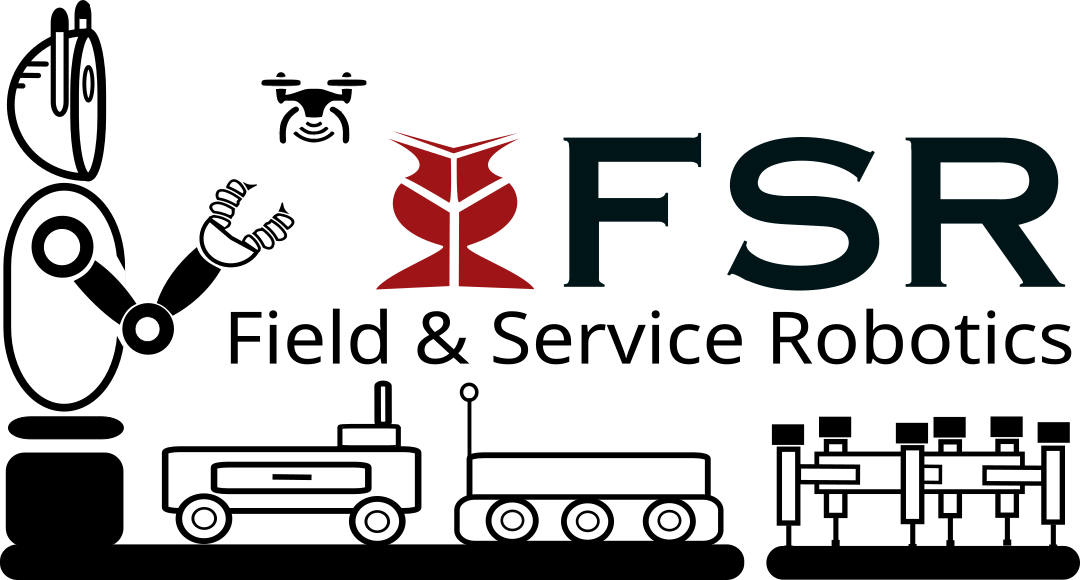Field and Service Robotics Group
The Field and Service Robotics Group is dedicated to developing cutting-edge robotic systems designed to operate in complex, unstructured environments. Our research spans advanced manipulators—including human amplifiers and dexterous dual-arm systems—as well as mobile platforms such as wheeled and tracked robots, unmanned aerial vehicles, legged robots, and bioinspired designs.
By pushing the boundaries of robotics, we aim to create innovative solutions that address critical societal challenges and unlock new possibilities across various industries.
People
Research Lines
Ongoing Projects
Publications
Research lines
🤖 Intelligent Perception and Dual-Arm Manipulation
This research focuses on developing advanced visual perception techniques to enhance robots’ interaction with their environment. It includes computer vision and deep learning methods for workspace understanding, enabling adaptive manipulation. Additionally, it investigates robust and reliable coordination of dual-arm robotic systems to perform complex manipulation tasks, such as crop harvesting or industrial assembly.
🤝 Collaborative and Multi-Agent Systems
This area explores frameworks and algorithms for cooperation among multiple robots, including unmanned ground vehicles (UGVs) and unmanned aerial vehicles (UAVs). It focuses on distributed coordination, team learning, and collective decision-making for applications such as precision agriculture, autonomous exploration, and infrastructure management.
🛰️ Intelligent Navigation
This research investigates advanced autonomous navigation algorithms in dynamic and unstructured environments. It works on visual perception techniques to improve decision-making during navigation and integrates sensor-based localization and real-time mapping. This field is essential for applications in agriculture, logistics, and challenging terrain exploration.
📊 Modeling of Robotic Systems
This line focuses on the mathematical and computational representation of robotic systems to improve their performance and control. It studies both physics-based and data-driven models to optimize motion planning, fault detection, and interaction with the environment.
🎛️ Control Theory and Data-Driven Control
This research aims to develop intelligent frameworks for planning, control, and decision-making driven by data. It investigates the application of machine learning-based control techniques to optimize efficiency and robustness in robotic systems. This field plays a key role in adaptive control algorithms for drones, agricultural robots, and robotic manipulators.
⚙️ Non-Linear Actuators
This area focuses on the design and development of non-linear actuators, such as soft grippers, that enable safe and dexterous object handling. It explores new actuation solutions that enhance dexterity and safety in manipulating fragile or complex-shaped objects.
🦿 Legged and Climbing Robots
This research investigates the development of robots with advanced locomotion, including legged and climbing robots. It studies control strategies to improve stability and mobility in rough terrains, facilitating applications in exploration, rescue, and infrastructure maintenance in hard-to-reach environments.
